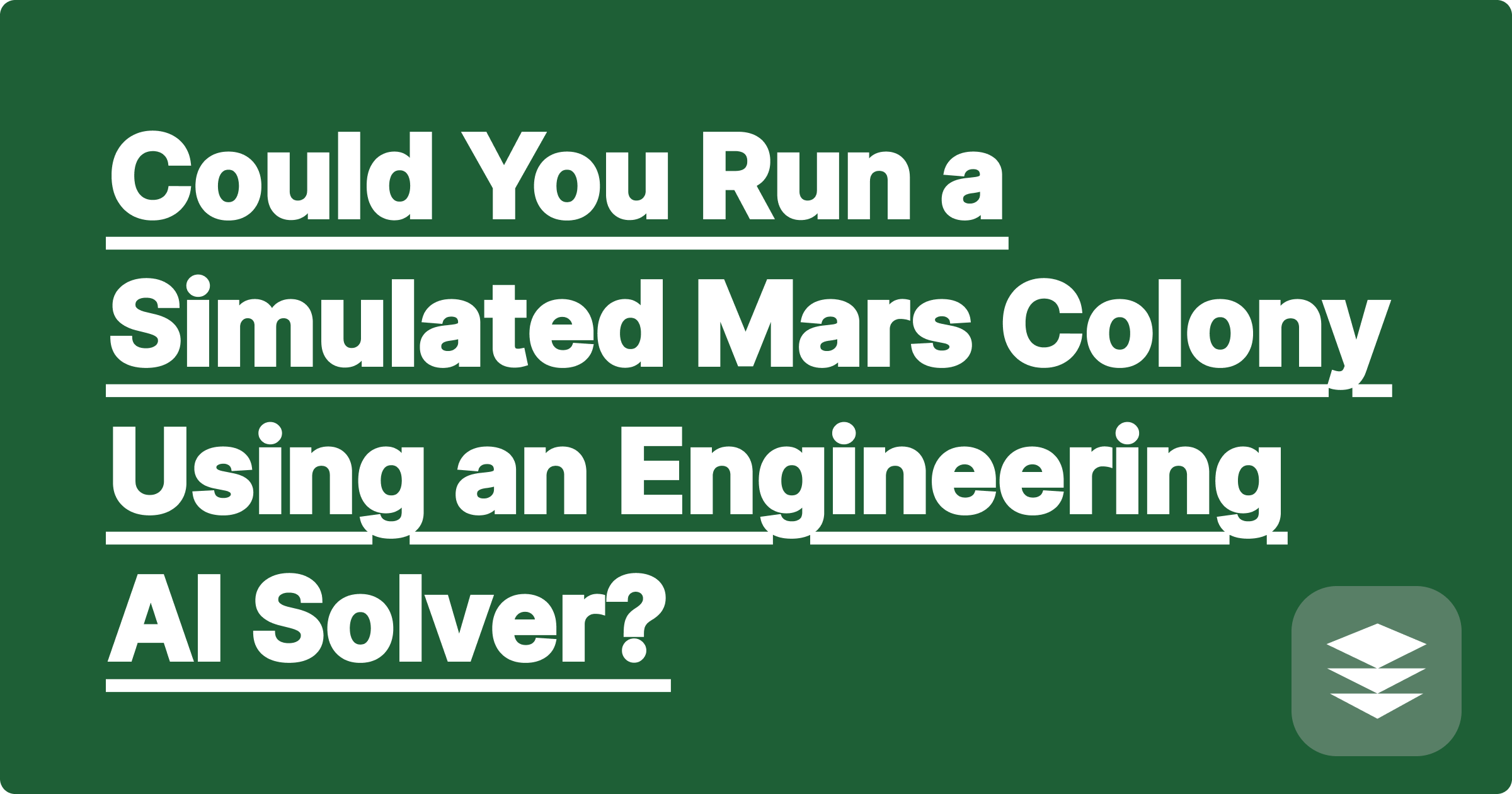
Establishing a self-sustaining colony on Mars is arguably the greatest engineering challenge humanity has ever conceived. It's a massive, multi-disciplinary problem involving structural engineering, thermodynamics, life support, power generation, and resource management. For students, it's also the ultimate thought experiment. How would you even begin to solve the countless calculations required to keep a Martian colony alive? This is where an AI can be your partner in one of the most fun engineering projects imaginable.
Let's imagine you are the lead engineer for a small, simulated Mars colony. You have your habitat, your solar panels, and your rovers. An AI assistant like GPAI Solver can act as your on-demand engineering consultant for the critical problems you'd face. This isn't just a fantasy; it's a practical application of ai for space engineering principles you learn in class.
Your habitat is a pressurized dome. You need to know if it can withstand the Martian environment.
[Image: A futuristic graphic of a dome habitat on Mars, with stress-color lines overlaid on it. A GPAI interface next to it shows the calculation for pressure differential stress. Alt-text: An AI for space engineering calculating structural stress on a Mars habitat.]
You have a bank of solar panels and a set of batteries. You need to manage your power budget.
Your water recycler can only process 100 liters per hour. You have wastewater from life support, a hydroponics bay, and a science experiment.
This is where the power of an AI note taker and cheatsheet builder comes in. As you solve each of these problems, you can compile the prompts, solutions, and key results into a GPAI Cheatsheet. This document becomes your "Colony Operations Manual," a personalized knowledge base for your simulated mission.
A: GPAI Solver is a first-principles solver. It's not a high-fidelity, multi-physics simulation software like Ansys or COMSOL. However, it is an exceptionally powerful tool for solving the underlying textbook equations that govern these systems, making it perfect for student projects and for checking the "ballpark" accuracy of more complex simulations.
A: You could use it to calculate orbital mechanics for a satellite, determine the heat shield requirements for atmospheric entry (thermodynamics), or calculate the required delta-v for a mission trajectory.
While you may not be building a real Mars colony tomorrow, using AI to tackle these big, exciting "what if" problems is the best way to see how the different fields of engineering connect. It transforms your homework from a series of disconnected problems into a single, inspiring mission.
[Start your next engineering project with an AI assistant. Try the GPAI Solver and see how it can help you tackle big challenges. Sign up for 100 free credits.]
What if Newton Had an AI? How 'Principia Mathematica' Could Be Written in a Week
Could You Run a Simulated Mars Colony Using an Engineering AI Solver?
Teach Me Poker': Can Game Theory AI Explain Winning Strategies?
What if Your Entire Degree Was an Open-Book Exam? How to Prepare with AI.
Re-writing History: What if the Titanic Was Designed with FEA and AI?
The Psychology of the 'Humanizer': Why We Trust 'Natural' Language More
A Day in the Life of a GPAI Engineer: The Problems We Solve for You
We Fed Our AI the Toughest 'Unsolvable' Math Problems. Here's What It Did.
The Carbon Footprint of Your Brain vs. AI: An Energy Efficiency Comparison
Bad Handwriting' Hall of Fame: Can Our AI Read Your Professor's Scrawl?